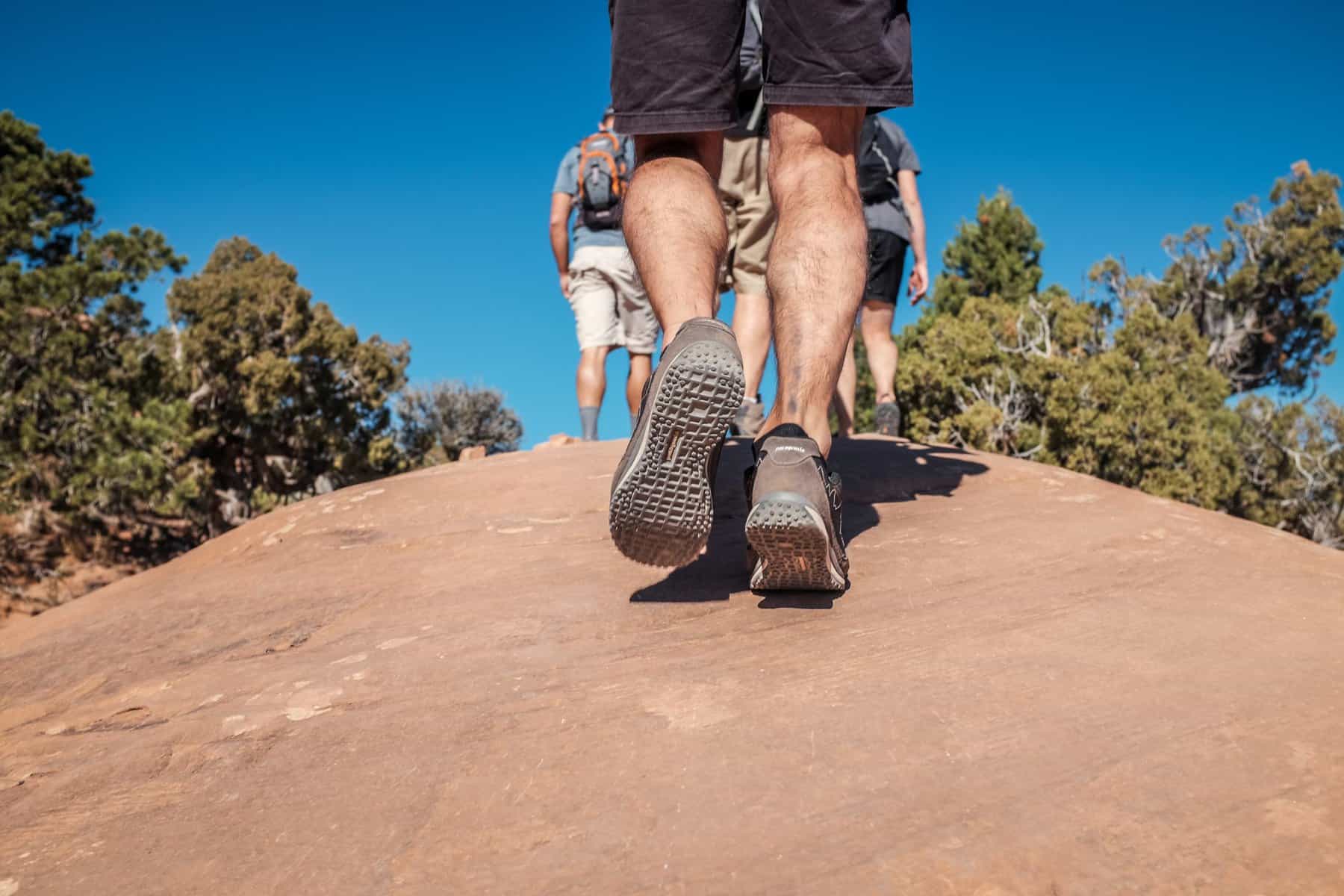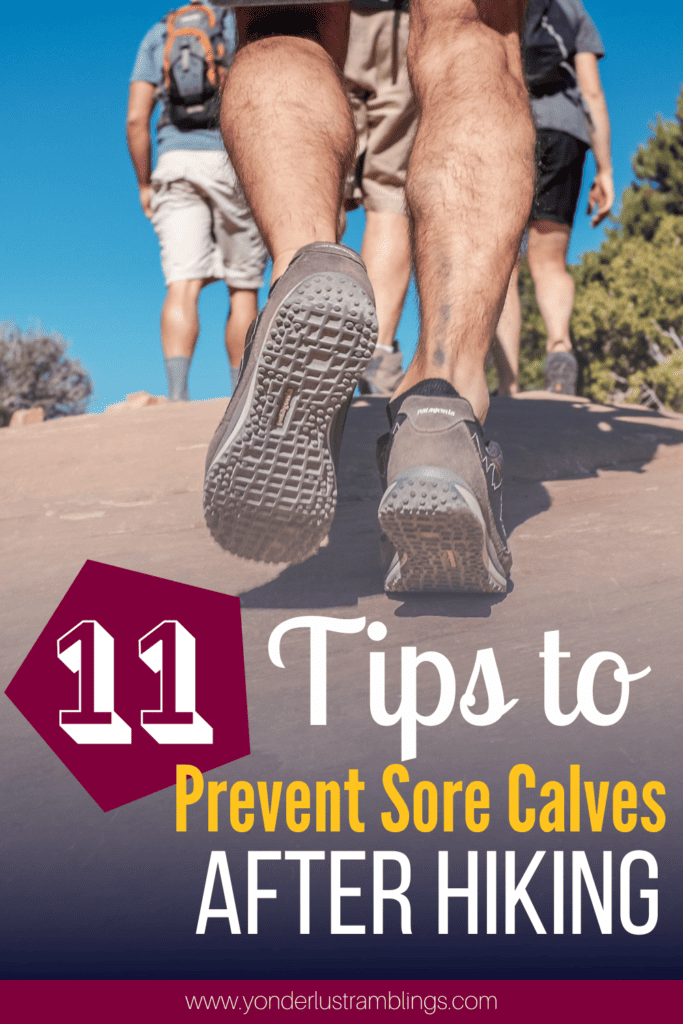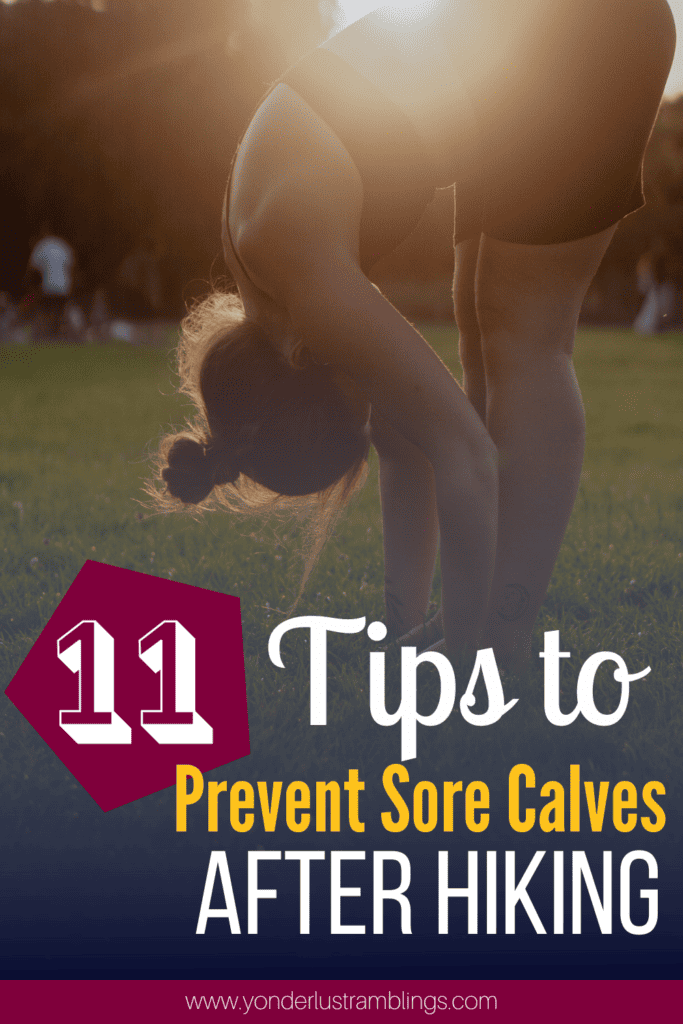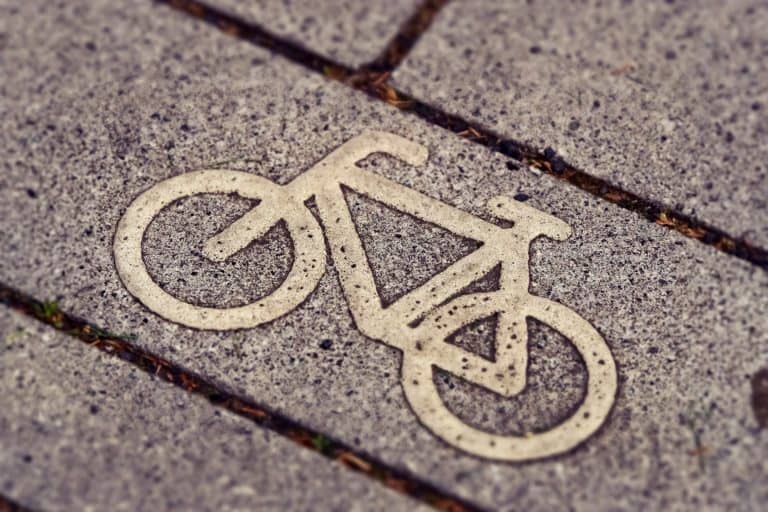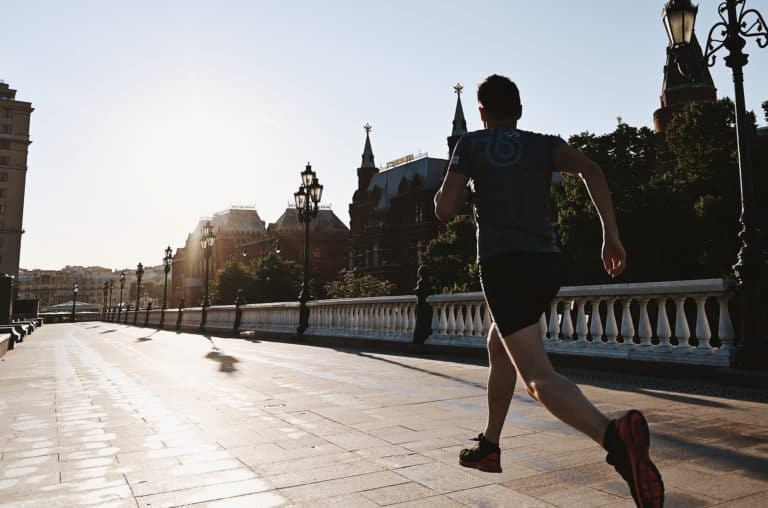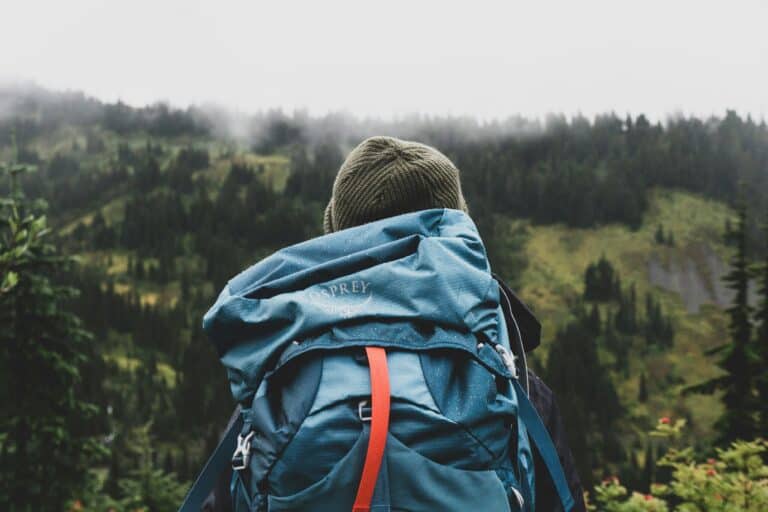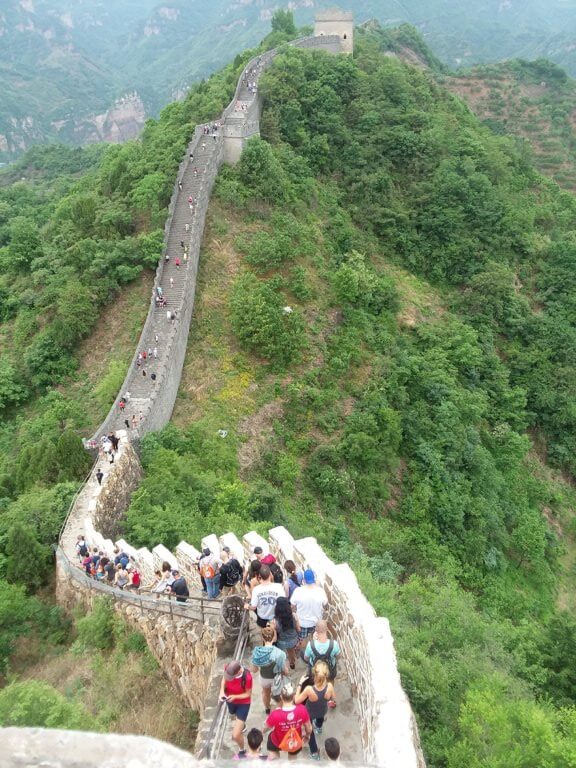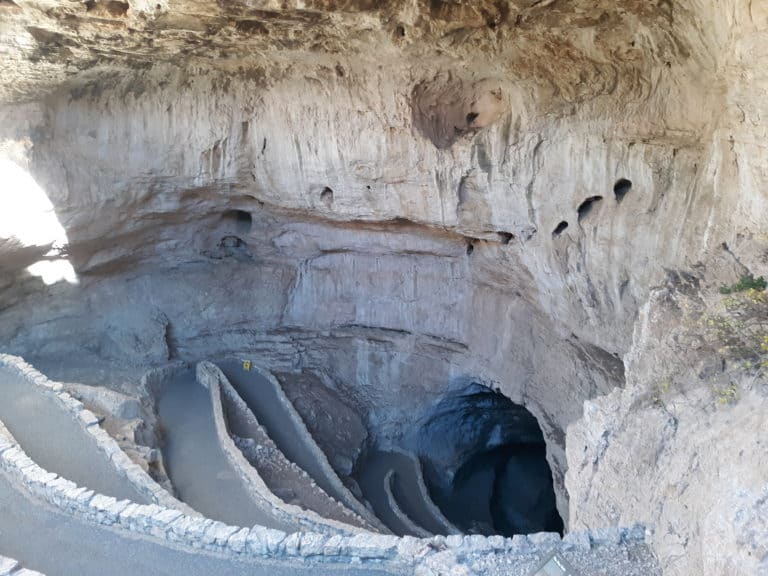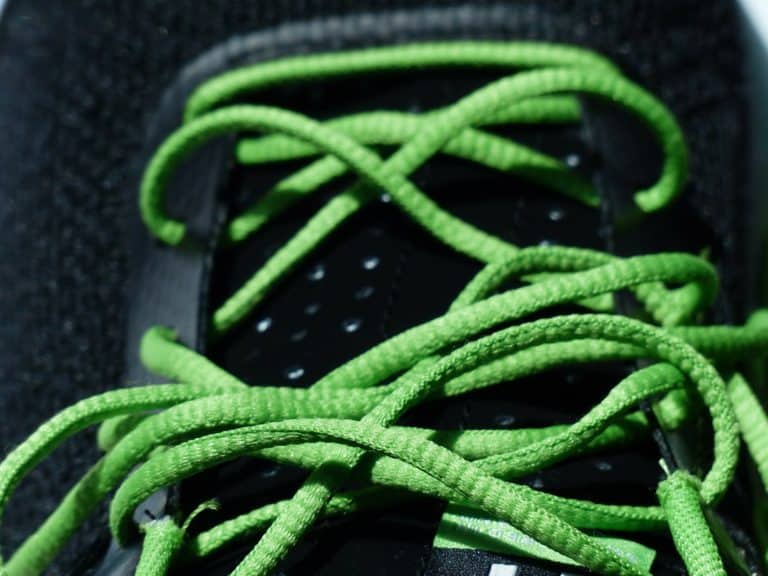11 Ways to Prevent Sore Calves After Hiking
The good news? Dealing with calf pain after hiking is normal, especially if you are new to hiking! But it does mean it might be time to examine what is causing the soreness. Looking for tips on how to prevent and treat sore calves after hiking? These are 11 simple things you can start doing TODAY to help prevent and treat sore calves after hiking:
- Make SLOW, INCREMENTAL progress (with distance, weight, elevation, frequency, etc)
- Cross Train
- Rest
- Check Your Gear
- Hydrate and Fuel
- Warm Up and Stretch
- Elevate
- Keep Your Legs Warm
- Compression and Foam Rolling
- Shorten Your Stride
- Know Your Limits
Disclosure: Below are some affiliate links-these are all products I highly recommend. I won’t make any recommendations on this page that I haven’t tested or personally used to help prevent calf pain after hiking!
Table of Contents
11 Strategies for Dealing with Sore Calves After Hiking
We’ll get going by taking a deeper dive into each of these 11 strategies for dealing with sore calves after hiking but first, let’s understand what exactly CAUSES these sore calves, since understanding the root cause is one of the first steps to preventing calf pain after hiking.
What Do Sore Muscles After A Hike FEEL Like?
Calf pain after hiking might feel something like this:
- A dull ache and soreness
- Noticeable soreness when engaging muscles in other activities, like squatting or climbing stairs.
***Note: this post is not intended to give medical advice. It is important for you as a hiker to decide if what you are feeling is sore calves, or something more painful. If you are experiencing ongoing and or severe pain, seek professional medical attention before continuing to hike.
Pain Signs to Watch for Include:
- Shooting or stabbing pain
- Unable to “live with it” or ignore it
- Interference with daily life
- Swelling
- Numbness
- Weakness
- Temperature Change
- Soreness that lasts more than a few days
What CAUSES Sore Calves After Hiking?
Simply put, calves can become sore anytime they are put under more stress than normal. “More stress than normal” might look like:
- Excessive Hiking (too much, too long, etc), i.e. “hiking beyond your current fitness level”
- A sudden increase in graded hiking (strenuous uphill or downhill hiking)
- Hiking too fast
- Hiking with extra weight (a loaded backpack)
The above are just a couple of examples of hiking with more stress than normal, or making aggressive changes to your normal hiking. Or even starting out too aggressively without a proper hiking foundation.
When we talk about calf muscles being sore, we are specifically talking about the gastrocnemius and the soleus muscles on the back of your legs, otherwise known as your calf muscles. In addition to those two main muscles at play here, you can also be dealing with a sore Achilles tendon, which connects muscle fibers to your heel bone.
Tips for PREVENTING Calf pain After Hiking
Here’s what you have been waiting for – 11 ways to actually PREVENT sore calves from happening after hiking!
Tip #1: Make Slow, Incremental Progress
This applies to adding length to your hikes, adding weight to your pack, adding elevation gains to your hikes, or adding frequency to the amount of hiking.
If you want to complete a 15 mile hike, make sure that you build up to that ability intentionally, slowly, and incrementally. For example, have a strong foundation of 5+ mile hikes that you do regularly. Then get a couple 8 milers under your belt. Then a couple 10 milers. Then a few 12 milers. You get the picture.
Want to know how I intentionally and incrementally train for hefty hikes like the 24 mile long Rim to Rim hike, or the 18 mile long Rim to River hike, or the 22 mile long Mt. Whitney hike?
- Guide to Hiking the Rim to Rim in One Day
- Rim to Rim Training Guide
- Guide to Hiking the Rim to River in One Day
- Guide to Hiking Mt. Whitney in One Day
- Mt. Whitney Training Plan
- 16 Week Rim to Rim Hiking Training Calendar
- 16 Week Mt. Whitney Hiking Training Calendar
If you want to backpack overnight or multiple days with a fully loaded pack, start with day hiking with a loaded daypack. Then do a few short hikes with your loaded overnight backpack, then a few practice longer hikes.
If you want to take on a hike with significant elevation gain, build up to that smartly! Even if that means doing loops on your humble local trail until you hit a couple thousand feet total (speaking from experience here), or running stairs, or finding big hills that you can practice on locally.
If you want to start hiking more regularly, do it in increments. If you are used to only hiking once a month, don’t wake up one morning and decide to start hiking 4x a week. Start with one month of hiking twice a month, then another month of hiking 4x a month, then another month of hiking 2x a week, etc.
Tip #2: Cross Train
Hiking is a full body workout, and it engages more muscles and muscle groups than you might think. One reason you might get sore calves after hiking is because certain muscles aren’t used to being engaged. One way to practice, as well as continuously keep up a well oiled “machine”, is to cross train. Cross training is an excellent way to keep all your muscles and muscle groups engaged and ready for hiking. If you look at any of my long distance hiking training calendars and plans, you will notice they all have one thing in common: intentional and planned cross training days. That is how important this is, whether you are a hiker, biker, runner, kayaker, or something else active!
So what exactly is cross training? What exercises can you do to cross train?
Cross training doesn’t have to be complicated. In fact, the more engaging you find it, the more likely you are to continue with it regularly, so make sure that it has that engagement factor. Boredom is one of the biggest roadblocks to watch for with cross training. For me, cross training is running, walking, kayaking, Pilates, yoga, HIIT home workouts, outdoor cycling, indoor stationary cycling, stair running, etc. Notice I don’t just do one form of cross training. That rotation helps prevent burnout and keep me engaged.
What exactly is a HIIT home workout?
Grab your own customizable HIIT home workout routine HERE!
Tip #3: Rest
Rest mid hike to catch your breath and give your legs a break, especially on vigorous hikes. Rest in between hikes. Rest after a strenuous hike. Rest from all physical activity during the week. Resting can also mean slowing your hiking pace down if you are starting to feel soreness in your calves. Recouping oxygen can help to alleviate soreness. Listen to your body and give it the rest it needs. And remember, especially if you are training and feel like you always need to be going and doing, you can always come back from a day of no training, or a botched training day, but you can’t always come back from an overuse injury.
Tip #4: Check Your Gear
Proper hiking footwear is critically important in helping to prevent sore calves after hiking. It’s the one hiking gear item you shouldn’t skimp on. Whether you are a traditional hiking boot type of person, or prefer the lighter trail runner shoe choice, make sure that you are always hiking with enough cushioning, stability, and traction to keep you grounded, and to help support your feet, legs, and calves.
If you suffer from sore calves after hiking, then trekking poles may be beneficial for you. They can help to add stability and support to your hikes, especially on difficult terrain or significant elevation gains and losses. I always go with my Black Diamond Trekking Poles. These are my go to’s not only for their sturdy reliability, but for the cork handles that absorb sweat and reduce slippage, like some other plastic or rubber handled trekking poles.
What other Hiking Essentials Should You Bring on Every Hike?
Tip #5: Hydrate and Fuel
Yes, a lack of hydration can cause muscle issues. So make sure that on each and every hike, you are hydrating properly. Not just chugging a bottle of water at the trailhead. Having a proper hydration system for continuously staying hydrated DURING your hike.
Want to know what some of your hiking hydration options are?
Here’s a few of my favorites:
- Katadyn Be Free Filter
- Sawyer Squeeze Filter
- Camelbak Hydration Vest and Water Bladder
- Platypus Wide Mouthed 3 Liter Water Bladder
- Running Hydration Belt
This handy Daily Hydration Tracker can also help keep you up on your hydration!
Also, make sure that you fuel properly before and during your hike. Helping your body perform at its peak means less having to rely on your calves to pick up the slack from a slacking internal system. If you can count on your fuel to keep you going, you may not have to push your calves as hard, and thus be less likely to suffer from sore calves after hiking. Here are a few of my favorite, healthy, lightweight, and easy to pack hiking snacks!
Tip #6: Warm Up and Stretch
If you notice that you are the kind of hiker that suffers from sore calves after hiking, try doing some simple leg warm up stretches and a short 5 minute easy walk before hitting the trail. Simply flexing your calves up and down and side to side can help, or finding a curb or step to do heel drops down from. And then after you are finished hiking, conclude by doing some simple post hike stretches, like touching your toes, heel drops, calf raises, lunges, flexes, or a downward dog yoga pose. Yoga in general is a great post hike activity as it really targets the lower half muscles, which directly correlate to sore calves.
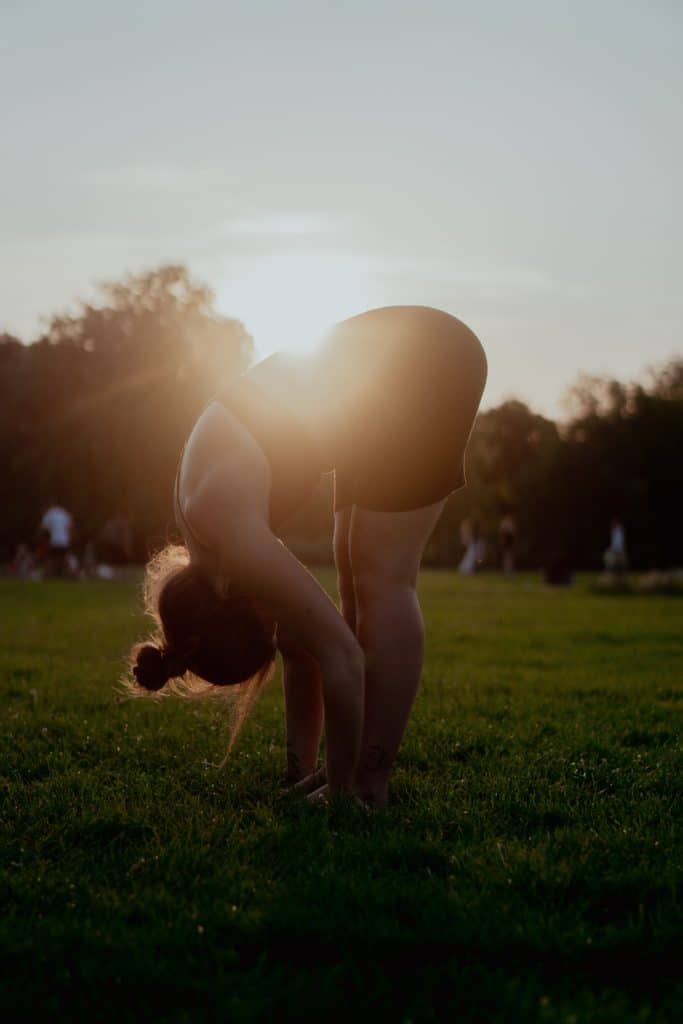
Tip #7: Elevate
If you are mid hike and start to notice that nagging feeling of soreness in your calves, take a break, eat one of these healthy hiking snacks, and rehydrate, all while elevating your legs and allowing the blood to flow down to your calves.
Tip #8: Keep Your Legs Warm
This mostly applies for colder hikes, but helping to keep your legs warm can help prevent sore and tight calf muscles. I like to hike in these fleece lined leggings!
Tip #9: Compression and Foam Rolling
Compression socks and foam rollers are two gear items I recommend to help with the problem of sore calves after hiking. Compression socks can help with blood flow to your calves, which can help stave off sore calves. Foam rollers, while sometimes cringingly uncomfortable and hard to get used to, can help to prevent and treat sore calves with regular and proper use. I struggled with foam rolling initially, until I “broke in” and started to see and FEEL the enormous benefits of regular usage.
Tip #10: Shorten Your Stride
If you tend to hike with a longer stride, one simple strategy that can help with sore calves after hiking is to try and shorten your stride. This might take some mindfulness and paying attention to your stride, which can often go unnoticed.
Tip # 11: Know Your Limits
Sometimes due to certain factors, like age, pre existing physical conditions, injuries, etc., it is best to know your limits, and this can also help to prevent sore calves after hiking. There may be reasons why you shouldn’t do a multi day backpacking trip on aggressive uphill climbs. If you do decide to push yourself past what you humbly and honestly know your limits are, then you might expect to have some side effects, one of which might be sore calves after hiking.
TREATMENT For Sore Calves
If you are reading this right now as you are currently nursing some sore calves, wondering what you can do this very instant to help the discomfort, here’s the answer:
- An Epsom salt bath
- Rest – no working out the day after or so following a tough hike and subsequent sore calves
- Foam Roll – again I am going to recommend this affordable and simple way to regularly prevent and treat sore calves
- Stretches – simple stretches like heel drops (stand on a curb or step and lower your heel down to the ground), calf raises, lunges, flexing your calves up and down and side to side, or a downward dog yoga stretch
I’m a Novice Hiker – Why Do I Still Have Sore Calves After Hiking?
While many of these culprits of sore calves pop up somewhat expectedly among newbie hikers, it is somewhat more confusing to novice hikers who still experience occasional sore calves after hiking. So what gives in this situation? Well, many of the same culprits that exist for newbie hikers.
For example, let’s say you are a regular hiker that hikes 3 miles 2x a week. But then one week, you complete a 10 mile hike, and the next day you have sore calves. It could be that you were not ready for a double digit hike, even though you hike regularly.
Or, let’s say you hike 6 mile hikes at least once a week in central Texas (using myself as an example here), where the terrain is largely flat and grades are less challenging if minimal, and then you go visit Colorado for a couple days and hike 14’ers like Mount Elbert with 4,000 feet in elevation gain. I might expect to have sore calves after hiking a significant uphill and downhill grade like that, as I am not “muscle acclimated” to that kind of elevation gain and loss.
To summarize, if you have sore calves after hiking, whether you are a newbie or a novice, the first thing to ask yourself is was there a change or did you do something different? That is often the culprit.
Secondly, did you do too much of something? A regular hiking routine is an awesome thing to have and stick to, but as with any other regular training or physical activity regimen, you don’t want to over do it. Overdoing it can equal calf pain after hiking, as well as other potentially troublesome after effects.
Case in point: when I train to hike long distance hikes, like the Grand Canyon’s 24 mile long Rim to Rim hike, or the highest peak in California at Mt. Whitney, not only do I train for several months prior, but I follow a very intentional hiking training plan that includes my incremental training hikes, as well as regular rest days, and regular cross training days. I follow this plan even though I regularly hike shorter hikes each week. I still treat long distance hiking training differently, to help prevent injury.
You can take a peak at both of these 16 week hiking training calendars that I personally developed and use here:
And there you have the low down on sore calves. The good news is that in general, the more conditioned of a hiker you are, the less you should expect to have to deal with sore calves after hiking. Just to recap, the best way to properly condition yourself for regular hiking (and properly condition yourself for less calf pain after hiking!) is to:
- Make SLOW, INCREMENTAL progress (with distance, weight, elevation, frequency, etc)
- Cross Train
- Rest
- Check Your Gear
- Hydrate and Fuel
- Warm Up and Stretch
- Elevate
- Keep Your Legs Warm
- Compression and Foam Rolling
- Shorten Your Stride
- Know Your Limits
PIN for LATER!

